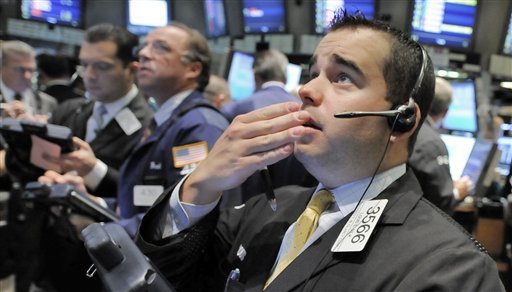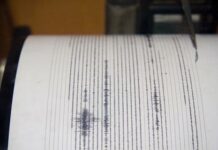Stocks fluctuated in quiet trading Tuesday as investors appeared
to adopt a wait-and-see approach to the range of options the
Federal Reserve has laid out to inject the sluggish credit markets
with a dose of much-needed confidence.
TIM PARADIS – Associated Press
NEW YORK
Stocks fluctuated in quiet trading Tuesday as investors appeared to adopt a wait-and-see approach to the range of options the Federal Reserve has laid out to inject the sluggish credit markets with a dose of much-needed confidence. Trading remained fractious, and the major indexes alternated between gains and losses a day after the market suffered another huge drop.
Investors appeared heartened if still cautious following the Federal Reserve’s announcement that it plans to buy massive amounts of corporate debt in order to jump-start lending in the markets where many companies turn for short-term loans. The evaporation of faith the loans will be repaid has lenders weary and made it more difficult and expensive for businesses and consumers alike to borrow money.
Credit markets showed some signs of easing. The market seized up after Lehman Brothers Holdings Inc. declared bankruptcy and after the government helped rescue insurer American International Group Inc. Banks have become fearful about lending to each other. That paralyzed borrowing, and its effects have been felt by companies and consumers alike.
The Fed’s latest move is designed to lubricate the lurching market whose troubles have spread to other parts of the economy though the measure stops short of a broad interest rate reduction that some traders have been calling for.
But the stock market was still extremely fractious
The Dow Jones industrials fell 74.07, or 0.74 percent, to 9,881.43, one day after it dropped below 10,000 for the first time in four years. The blue chip index fell as much as 800 points on Monday before closing with a loss of 370.
Broader indexes also rose. The Standard & Poor’s 500 index fell 9.94, or 0.94 percent, to 1,046.95; and the Nasdaq composite index fell 21.40, or 1.15 percent, to 1,841.56.
Investors are still hoping to see other moves from the Fed to boost confidence, including perhaps an interest rate cut. Australia’s central bank lowered interest rates by the largest amount since 1992 in a surprise move, and that reignited hopes that others including the Federal Reserve and European Central Bank might follow.
Both Fed Chairman Ben Bernanke and European Central Bank President Jean-Claude Trichet have speeches scheduled Tuesday, and the Fed is due to release minutes from the last interest-rate setting meeting.
Though not giving the market a rate cut that many traders have been clamoring for, the Fed has taken other steps to help unclog the credit markets. On Tuesday, policymakers provided more details about when it will make $900 billion in short-term loans available to squeezed banks.
The loans – part of an effort to ease intensifying credit stresses – are made available to banks through auctions. The Fed, in coordination with other countries’ central banks engaged in similar efforts, laid out dates that it will conduct the auctions through the rest of this year.
Traders might get a better idea of what central bankers are thinking when the Fed releases minutes from its Sept. 16 meeting at 2 p.m. EDT. Policymakers, who will meet again at the end of the month later, left key interest rate unchanged at 2 percent.
Concerns about the credit markets still pushed investors into the relative safety of government debt. Investors moved into longer-term Treasury bonds, with the yield on the 10-year note fell to 3.52 percent from 3.58 percent late Monday.
However, speculation that the Fed might cut interest rates caused yields on shorter-term debt to rise. The yield on the three-month Treasury bill rebounded to 0.81 percent from 0.50 percent late Monday. Demand for Treasurys remains high because of their safety; investors are willing to take extremely low returns just to have their money in a secure place.
Oil prices rebounded to near $90 Tuesday, a day after plunging to an eight-month low on concerns a global recession will undermine demand for crude. Light, sweet crude rose $3.07 to $90.88 a barrel in electronic trading on the New York Mercantile Exchange.
In corporate news, Bank of America Corp. fell $4.82, or 15 percent, to $27.40 after reporting late Monday that profits fell 68 percent during the third quarter. The bank also said it will raise $10 billion by issuing common stock and slashed its dividend.













